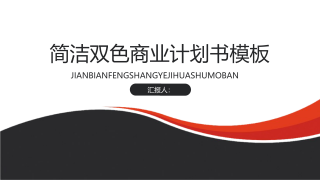农民工工资对中国城乡收入差距的影响
VIP免费
浙江财经学院硕士学位论文
摘 要
人们普遍认为近年来随着中国农村劳动力流动规模的增加,城乡收入差距不
仅没有缩小,反而在不断扩大。这与二元经济理论关于劳动力流动有利于缩小收
入差距的理论是相悖的。对此,有的学者认为,中国的现实情况是农村剩余劳动
力流动只是以农民工的方式转移,即只有职业转移而没有户籍和社会身份的转
变,无法取得城市户口,相比城镇居民,农民工的工资收入水平太低,所以农村
劳动力流动不能缩小城乡收入差距;而另有部分学者则认为,出现这种悖论的原
因是由于中国统计数据造成的假象,认为在中国统计年鉴中反映城乡居民收入差
距的城镇居民人均可支配收入和农村居民人均纯收入的数据存在失真的情形。之
所以出现数据失真是由于目前统计数据所采用的统计口径是以常住户人口为抽
样调查对象,农民工没有取得城市户籍,身份上还是农村人口,但由于在城市务
工,统计收入时计入了城镇居民总收入中,从而夸大了城乡收入差距,所以是一
种由于统计方法而造成的假象。真实情况究竟如何?是农民工的工资收入低,还
是由于统计方法误差造成的假象?本文正是根据这一争论,围绕农村劳动力流动
和城乡收入差距的关系这一主题展开探讨。
首先,文章第一部分对相关理论文献进行了梳理和分析,对库兹涅茨提出的
“倒 U”型假说进行介绍和分析,认为目前中国已经处于“倒 U”曲线的下降阶
段,即中国的城乡收入差距已经开始缩小。重点介绍了刘易斯二元经济理论,认
为它清晰地定义了二元经济结构,指出了现代部门和传统部门的差异,描述了影
响收入差距的内在机制,为发展中国家的发展提供了一定的理论依据,同时指出
它的缺陷过于强调现代部门对经济发展的作用,而忽视了农业部门的经济发展对
经济长期发展的重要作用。国内学者在研究收入差距时侧重运用实证分析来验证
劳动力流动与城乡收入差距之间的关系,而对数据本身的真实性大多不予以关
注。
其次,文章第二部分是对农民工工资如何影响城乡收入差距作出理论分析,
在前人研究的基础上,提出了农民工工资影响城乡收入差距的阈值公式,认为农
民工工资收入增长是否能够缩小城乡收入差距的关键在于农民工工资是否超过
了某一阈值,如果工资收入超过了这一阈值,那么不断增加的农民工工资将对城
乡收入差距的缩小产生积极作用,而决定这一阈值系数的因素主要是农村人口占
总人口比重、城镇人口占总人口比重以及前期城乡收入比。通过对近二十年的数
据分析,得出农民工工资收入对城乡收入差距的影响是先扩大后缩小的结论。
I
浙江财经学院硕士学位论文
再次,文章第三部分着重分析了数据统计口径的问题,通过对中国统计年鉴
中城乡居民收入的分析,认为目前统计局统计城乡居民收入时,确实遗漏了农民
工的工资收入,认为正是这一数据计算的失真导致了目前城乡收入差距被夸大。
通过调整农民工工资收入,发现农村居民总收入和城镇居民总收入都有不同程度
的增加,这主要是因为农民工相对于农村地区从事农业生产的农民来说,收入较
高,而与有户籍身份的城镇居民相比,农民工收入相对就比较低。所以把农民工
工资收入重新划拨回农村后,城镇居民总收入也相应地增加。数据调整后重新计
算的城乡收入比相对于官方统计数据显示的城乡收入比,明显小了很多。通过计
量模型对农民工工资与城乡收入差距进行相关性分析,得出农民工工资影响城乡
收入差距的拐点值,模型计量结果得出的拐点值与理论推导得出的阈值基本一
致。但是文章也承认数据调整后显示的城乡收入比,与同期其他国家相比仍然较
高。中国城乡收入差距仍然较大。
最后,第四部分分析了中国存在这种劳动力流动悖论的原因,并在第五部分
提出了缩小中国城乡收入差距的长效机制。
结论部分对全文内容进行了总结,概况了文章的主要观点。
关键词:农民工;农民工工资水平;城乡收入差距;统计误差
II
浙江财经学院硕士学位论文
ABSTRACT
It is widely believed that with the increase in the scale of Chinese rural labor
mobility in recent years, the income gap between urban and rural areas is not only
reduced, but also expanding. It is contrary to the dual economy theory. In this regard,
some scholars believe that Chinese reality is that the flow of surplus labor in rural
areas just migrant workers transfers. That only occupational transfer is not to obtain
urban status. And compared to urban residents, the level of wages of migrant workers
is too low; otherwise, some scholars believe that the reason for this paradox is due to
Chinese statistics illusion. That reflects the income gap between urban and rural
residents in China Statistical Yearbook of urban resident’s per capita disposable
income and rural per capita net income of distortion of data exists in. How the truth?
This article is based on the theme of the controversy surrounding the relationship of
the rural labor mobility and urban-rural income gap discusses.
First, the first part of the article sort out and analyze the relevant theoretical
literature to introduction of the Kuznets inverted ‘U’-type hypothesis and analysis.
That Chinese urban-rural income gap has begun to narrow. And this section highlights
the Lewis dual economy theory, it clearly defines the dual economy structure, pointed
out that the differences in the modern and traditional sectors, describes the inner
mechanism in the impact of the income gap and provides a theoretical basis for the
development of developing countries.
The second part of the article is to make a theoretical analysis between the wages of
migrant workers urban-rural income gap. It is the threshold formula of wages for
migrant workers affects the income gap between urban and rural areas. The migrant
workers’ wage growth to narrow the income gap, the key is whether the wages of
migrant workers over a certain threshold. The factors that determine this threshold
coefficient mainly rural population proportion in the total population, urban
population proportion in the total population and previous urban-rural income ratio.
Through the collation of data analysis that over the past decade, the wages of migrant
workers is certainly conducive to narrowing the income gap between urban and rural
areas.
The third part of the article analyzes the statistics caliber. Analysis of the urban and
rural residents in China Statistical Yearbook, Bureau of Statistics indeed omitted from
the wages of migrant workers. The distortion data causes the income gap between
urban and rural areas have been exaggerated. The total income of rural residents and
the total income of urban residents have increased in varying degrees by adjusting the
wages of migrant workers. This is mainly the migrant workers higher income to
farmers that engaged in agricultural production, relative to the rural areas compared
with urban residents, the income of migrant workers are relatively low. So
re-allocation of the wages of migrant workers return to the countryside, the total
income of urban residents is also a corresponding increase in. The adjusted data show
III
浙江财经学院硕士学位论文
that the urban-rural income ratio relative to official statistics is significantly small.
However, compared with other countries, Chinese urban-rural income gap is still
high.
The fourth section analyzes the reason for the existence of such labor mobility
paradox in China. And in the fifth part of a long-term mechanism to narrow the
urban-rural income gap in China. And the concluding part is the full-text content
summary to overview the article main point.
Keywords: migrant workers; the level of wages for migrant workers; income gap
between urban and rural areas; statistical error
IV
浙江财经学院硕士学位论文
目 录
第 1 章 绪论…………………………………………………………………………1
1.1 选题背景与研究意义………………………………………………………1
1.2 国内外研究现状与发展趋势………………………………………………1
1.3 相关概念的界定……………………………………………………………5
1.4 本文的结构安排……………………………………………………………6
1.5 创新点与不足………………………………………………………………6
第 2 章 农民工工资影响城乡收入差距的理论分析………………………………7
2.1 改革开放以来农村剩余劳动力流动趋势…………………………………7
2.2 改革开放以来城乡收入差距的变动及其原因……………………………9
2.3 农民工工资影响城乡收入差距的机理分析………………………………11
第 3 章 统计口径误差及其对城乡收入差距的影响………………………………15
3.1 农民工工资收入统计的误差………………………………………………15
3.2 农民工工资收入统计调整前后城乡收入差距的变化……………………17
3.3 农民工工资收入对城乡收入差距影响分析………………………………18
3.3.1 调整前后城乡收入差距比较…………………………………………18
3.3.2 调整后城乡收入差距分析……………………………………………20
3.3.3 农村人力资本外溢对城乡收入差距影响分析………………………24
3.4 农民工工资收入与城乡收入差距相关性实证分析………………………26
第 4 章 农村外出劳动力流动悖论产生的原因……………………………………29
4.1 统计方法误差夸大了城乡收入差距………………………………………30
4.2 城乡居民财产性收入差距拉大了城乡收入差距…………………………31
4.3 农民工工资收入水平低不利于缩小城乡收入差距………………………32
4.4 劳动力就业市场不完善不利于农民工收入增长…………………………33
4.5 农村和农业发展不足拖累农民收入增长…………………………………34
第 5 章 缩小中国城乡收入差距的长效机制………………………………………36
5.1 调整统计方法,提高统计数据的准确性…………………………………36
5.2 增加农民财产性收入,有利于缩小城乡收入差距………………………36
5.3 加大农村人力资本投资,提高农村劳动力素质…………………………37
5.4 消除制度障碍,促进农村劳动力合理有序流动…………………………38
5.5 合理调整农民工工资水平,建立工资收入增长集体协商制度…………39
V
浙江财经学院硕士学位论文
5.6 加强农村社会保障措施,消除劳动力流动顾虑…………………………40
结论…………………………………………………………………………………42
参考文献……………………………………………………………………………43
附录…………………………………………………………………………………46
致谢…………………………………………………………………………………47
VI
摘要:
展开>>
收起<<
浙江财经学院硕士学位论文摘要人们普遍认为近年来随着中国农村劳动力流动规模的增加,城乡收入差距不仅没有缩小,反而在不断扩大。这与二元经济理论关于劳动力流动有利于缩小收入差距的理论是相悖的。对此,有的学者认为,中国的现实情况是农村剩余劳动力流动只是以农民工的方式转移,即只有职业转移而没有户籍和社会身份的转变,无法取得城市户口,相比城镇居民,农民工的工资收入水平太低,所以农村劳动力流动不能缩小城乡收入差距;而另有部分学者则认为,出现这种悖论的原因是由于中国统计数据造成的假象,认为在中国统计年鉴中反映城乡居民收入差距的城镇居民人均可支配收入和农村居民人均纯收入的数据存在失真的情形。之所以出现数据失真是...
相关推荐
-
跨境电商商业计划书模版VIP免费
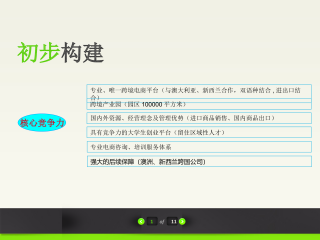
 2025-01-09 27
2025-01-09 27 -
跨境电商方案范文VIP免费
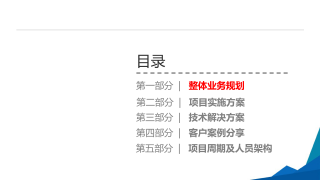
 2025-01-09 14
2025-01-09 14 -
创业计划书VIP免费
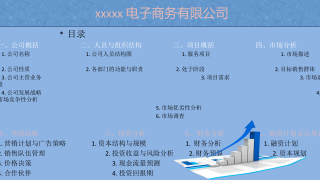
 2025-01-09 18
2025-01-09 18 -
xx生鲜APP计划书VIP免费

 2025-01-09 12
2025-01-09 12 -
跨境电商创业园商业计划书(盈利模式)VIP免费
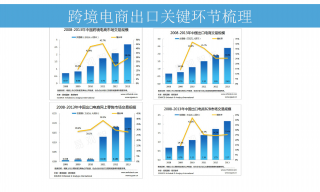
 2025-01-09 8
2025-01-09 8 -
跨境电商计划书VIP免费
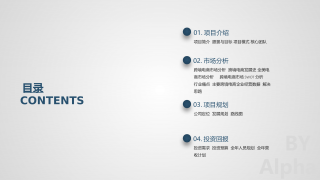
 2025-01-09 13
2025-01-09 13 -
绿色食品电商平台项目计划书VIP免费

 2025-01-09 22
2025-01-09 22 -
农产品电子商务商业计划书VIP免费

 2025-01-09 9
2025-01-09 9 -
农村电商平台商业计划书VIP免费
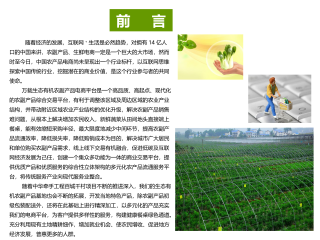
 2025-01-09 13
2025-01-09 13 -
生鲜商城平台商业计划书VIP免费
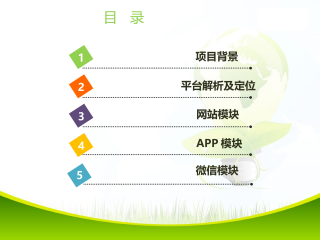
 2025-01-09 21
2025-01-09 21
作者:周伟光
分类:高等教育资料
价格:15积分
属性:51 页
大小:861.87KB
格式:PDF
时间:2024-09-30


